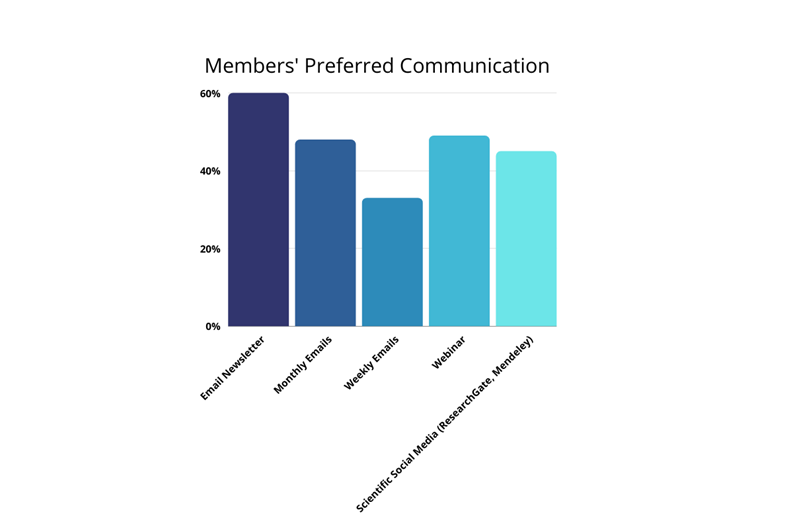communicating-with-your-members-remotely
February 12, 2021
With the ongoing global COVID-19 pandemic, communication and staying connected is so important. Many people are still working in a virtual environment and having virtually distanced conversations with family and friends. For learned societies, this means re-evaluating how and when to talk to your members. In our latest Wiley society member survey we looked at the best ways of communicating – what to do, and perhaps more importantly what not to do.
Are you using the right channels?
How often a society engages with their members is directly related to how satisfied members are with their society. So, knowing when to reach out to your members--and through which channel--is extremely important.
Regular emails remain an important way to communicate, but there’s some room to explore other channels which may work better for your community.

For example, 45% of our survey respondents said they enjoy contributing to webinars and 35% say they like to be reached through survey participation.
In fact, surveying members on their needs or preferences is one of the best ways to get direct feedback and build engagement with your community.
Are you reaching the right members?
Past member surveys have shown that early career researchers (ECRs) want different things from their society membership than their more experienced colleagues. This includes how they want to receive updates and information. Those who are newer to the research community (like students) tend to prefer weekly emails and communication via social media. This group is more likely to consume research than produce it, and in our survey, also more likely to be based outside of the United States and Europe.
Older members, especially those located in the United States, prefer the more formal communication methods. This group is more likely to be producers of research rather than consumers and likely to be members of more than one society.
Knowing the demographics of your member-base and executing your communication strategy around this could make a big difference in member satisfaction, growth, and retention.
Don’t be a stranger
It’s easy to push some communications to the back burner or worry that members will start to tune all that email out. But since we can’t come together in person right now, our research shows that members actually find engaging virtually is not all that bad. Whichever method you choose to stay in touch, keep in mind that it should be the form that members enjoy. If you’re not sure where to start, run a survey and ask your community how they’d like to hear from you, it’s likely to boost satisfaction all around!


